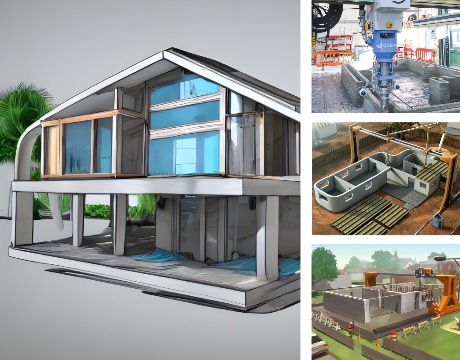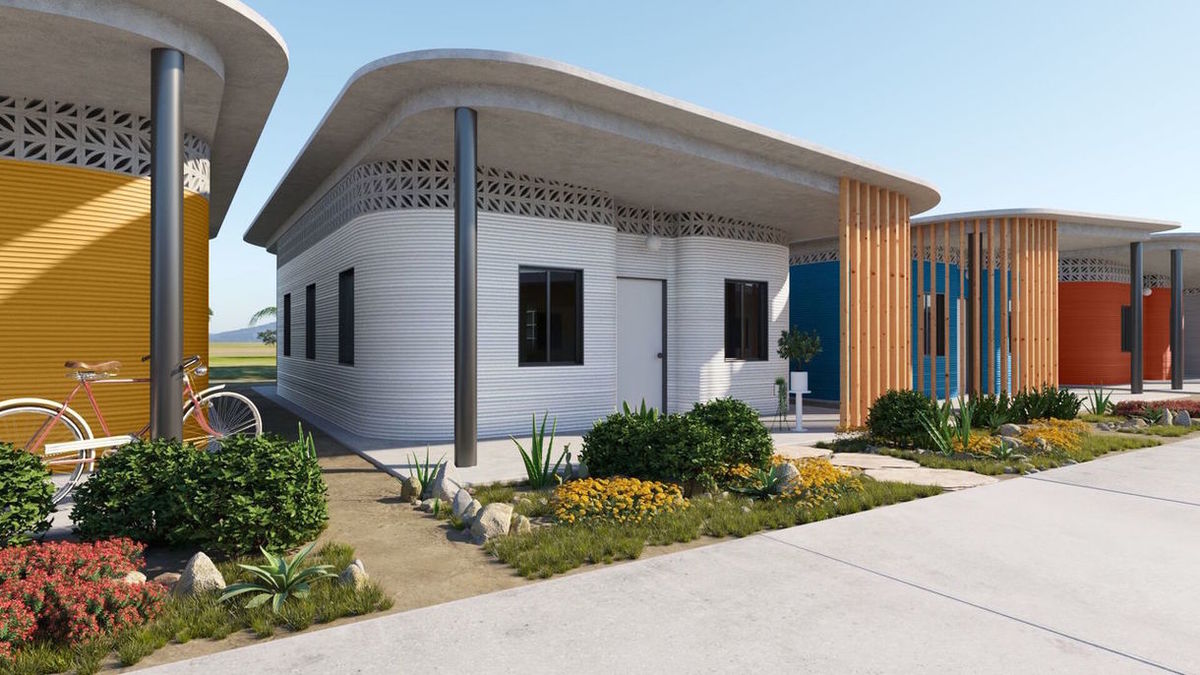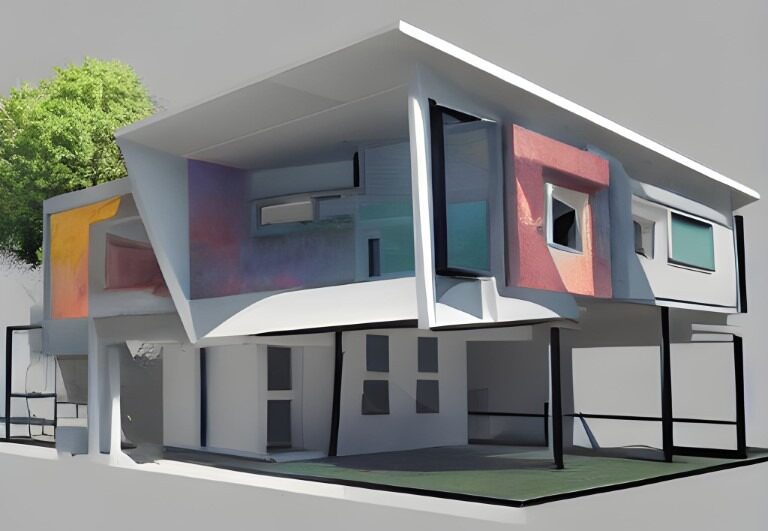3D printed homes have the potential to revolutionize the construction industry by offering faster and more efficient building methods, as well as providing sustainable and affordable housing solutions.

Printed homes are structures that are built using 3D printing technology. In this process, a large-scale printer is used to construct the walls, roof, and other parts of a building layer by layer, using materials such as concrete, plastic, or a combination of materials. The process of 3D printing homes is often faster and more cost-effective compared to traditional construction methods, as it eliminates the need for manual labor and reduces waste.
3D printed homes can be designed to meet specific requirements, such as energy efficiency, accessibility, and affordability. They can also be customized to meet the specific needs and preferences of the occupants. Additionally, 3D printing technology allows for the creation of complex shapes and designs that would be difficult or impossible to achieve using traditional construction methods.
Overall, 3D printed homes offer an innovative solution for addressing the global need for affordable and sustainable housing and are an exciting development in the construction industry. However, the technology is still in the early stages of development, and further research and development is needed to improve the efficiency, durability, and safety of 3D printed homes.
The type of cement used for 3D printed homes can vary depending on the specific 3D printing technology and the desired properties of the final structure. Some common types of cement used for 3D printing include:
- Portland cement: This is the most used type of cement in construction and is made by heating a mixture of limestone and clay to high temperatures. Portland cement is strong, durable, and sets quickly, making it a good choice for 3D printing.
- Geopolymer cement: This type of cement is made from industrial waste materials and is a more sustainable alternative to Portland cement. Geopolymer cement is also lightweight, fire-resistant, and has good insulation properties, making it a good choice for 3D printing.
- Fiber-reinforced concrete: This type of concrete is made by adding fibers, such as steel or glass, to the mixture to improve its strength and durability. Fiber-reinforced concrete is often used for 3D printing, as it provides added stability to the structure and helps reduce the risk of cracking.
- Self-compacting concrete: This type of concrete has a high fluidity and can flow into tight spaces and fill complex shapes, making it well-suited for 3D printing. Self-compacting concrete is also less prone to cracking and has good resistance to shrinkage, which makes it a good choice for 3D printed homes.
The type of cement used for 3D printing will depend on the specific requirements of the project, including the desired properties of the final structure, the climate and environmental conditions, and the availability of materials.
Building 3D printed homes comes with several potential risks and challenges, including:
- Structural integrity: The long-term structural integrity of 3D printed homes is still uncertain, as the technology is new and has not been widely tested over time. There are concerns that the structures may not be as durable or resistant to natural disasters and other types of stress as traditionally built homes.
- Material quality control: Ensuring consistent quality and uniformity of the building materials used for 3D printing can be challenging, especially for large-scale projects. This can lead to issues with the strength and stability of the structure, as well as potential safety hazards.
- Cost: 3D printing technology can be expensive, and the cost of building a 3D printed home may be higher than traditional construction methods. Additionally, the cost of materials and labor may vary depending on the location and availability of resources.
- Planning and zoning regulations: 3D printed homes may not meet all local building codes and regulations, and there may be issues with obtaining the necessary permits and approvals to build a 3D printed home in certain areas.
- Energy efficiency: The thermal performance and energy efficiency of 3D printed homes may be lower than traditional construction methods, and more research is needed to determine the most effective ways to improve the energy efficiency of these structures.
- Waste management: The 3D printing process generates a significant amount of waste material, and the disposal of this waste can pose environmental and health risks.
Despite these risks, 3D printed homes have the potential to revolutionize the construction industry by offering faster and more efficient building methods, as well as providing sustainable and affordable housing solutions. However, it will be important to carefully consider these risks and to continue to research and develop the technology to address these challenges and ensure the safety and reliability of 3D printed homes.
You can buy 3D construction printers from a variety of sources, including:
- Manufacturer websites: Many companies that specialize in 3D printing technology offer their products directly through their websites. This can be a convenient way to purchase a 3D construction printer, as you can compare different models and specifications and purchase directly from the manufacturer.
- Online marketplaces: Online marketplaces such as Amazon and Alibaba offer a wide range of 3D construction printers from different manufacturers. This can be a good option if you’re looking for a variety of choices and competitive prices.
- Local dealers and distributors: You can also purchase 3D construction printers from local dealers and distributors in your area. This can be a good option if you’re looking for hands-on support and demonstrations, or if you prefer to purchase from a local business.
- Trade shows and exhibitions: Trade shows and exhibitions focused on construction and building technology are a good place to see and learn about different 3D construction printers. You may also be able to purchase a 3D construction printer directly from the manufacturer at these events.
- When purchasing a 3D construction printer, it’s important to carefully consider your specific needs and requirements, as well as the type of materials you will be using, the size of your projects, and your budget. You should also consider the support and training that is available from the manufacturer or seller, as well as the reputation and reliability of the company.
There are companies that manufacture cement for use in 3D construction printers, including:
- GCC: A leading producer of cement, ready-mixed concrete, aggregates, and innovative solutions for the construction industry.
- CEMEX: This is a leading supplier of building materials, including cement, and offers a range of products suitable for use in 3D construction printing.
These are companies that offer cement for use in 3D construction printing. When choosing cement for your 3D construction printer, it’s important to carefully consider your specific needs and requirements, as well as the properties and performance of the cement. You should also consider the cost and availability of the cement, as well as the reputation and reliability of the manufacturer.
Yes, there are several 3D printed communities around the world. These communities are designed and built using 3D printing technology, and often feature homes and other structures that have been printed using large-scale 3D printers.
Some examples of 3D printed communities include:
- Icon: This US-based company has built several 3D printed homes in Texas and other states and is working to develop 3D printed communities that can provide affordable and sustainable housing solutions.
- Impression 3D: This French company has built several 3D printed homes and is working to develop 3D printed communities in France and other countries.

These 3D printed communities represent exciting developments in the construction industry and are helping to demonstrate the potential of 3D printing technology to revolutionize the way we build and live. However, the technology is still in the early stages of development, and further research and development is needed to improve the efficiency, durability, and safety of 3D printed homes and communities.
Texas Hurricane Homes
Texas Beach Homes is putting together a project to build a 3d-Printed home community on the Island, in partnership with GCC (our supplier of choice for cement), and landowners on the north-end of the island, with special financing through the federal Opportunity Zone (OZ) investment program.
Our goal is to build $99k beach homes. Stay tuned at a site we are just putting online at TexasHurricaneHomes.com



Leave a Reply
You must Register or Login to post a comment.
Become a registered member, it is fast, fun, and free! Gain access to sales analysis, conversations, and much more! Texas state law requires membership before we can share sales information or talk about subjects relevant to ownership. See our membership page for more details.